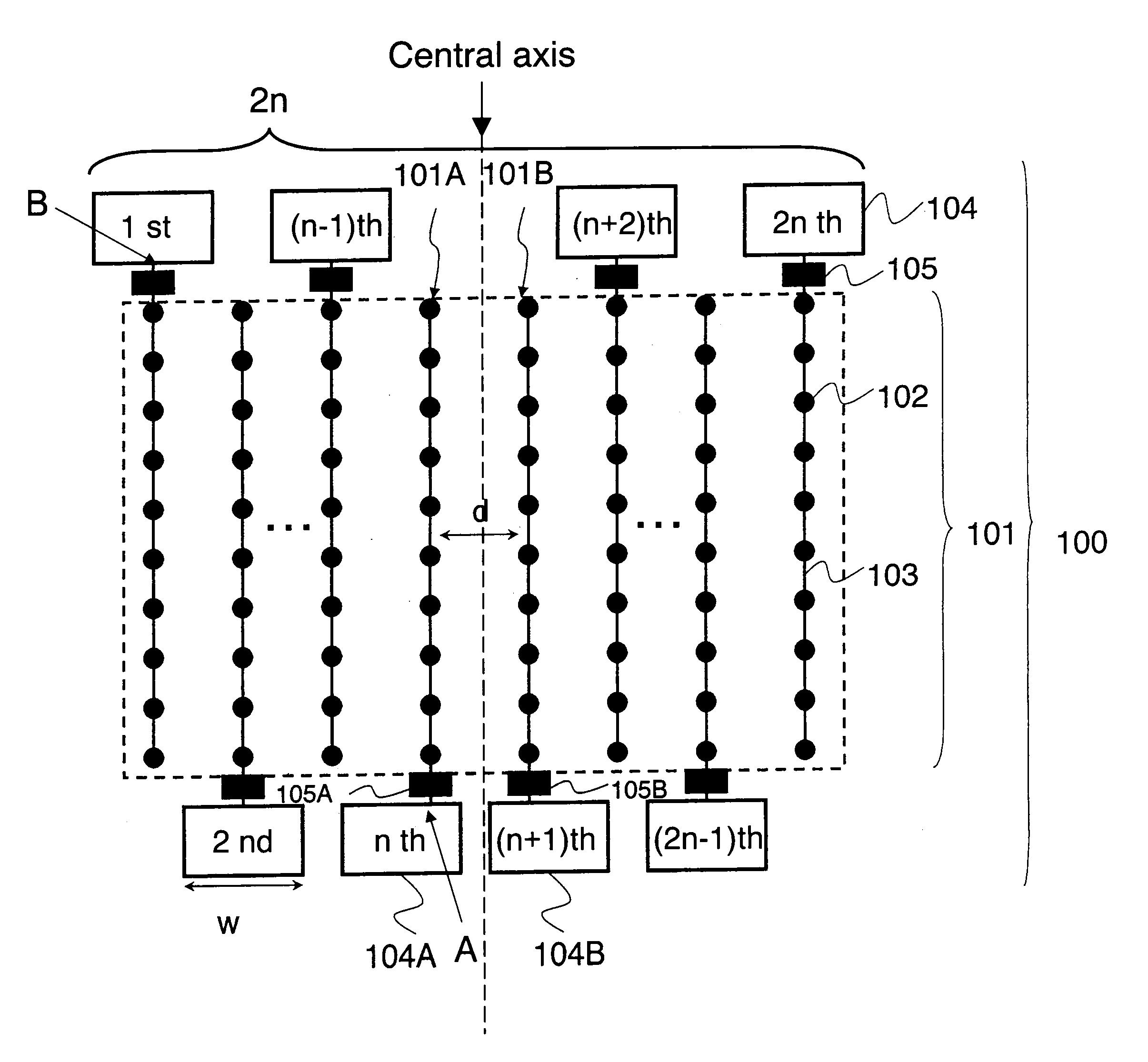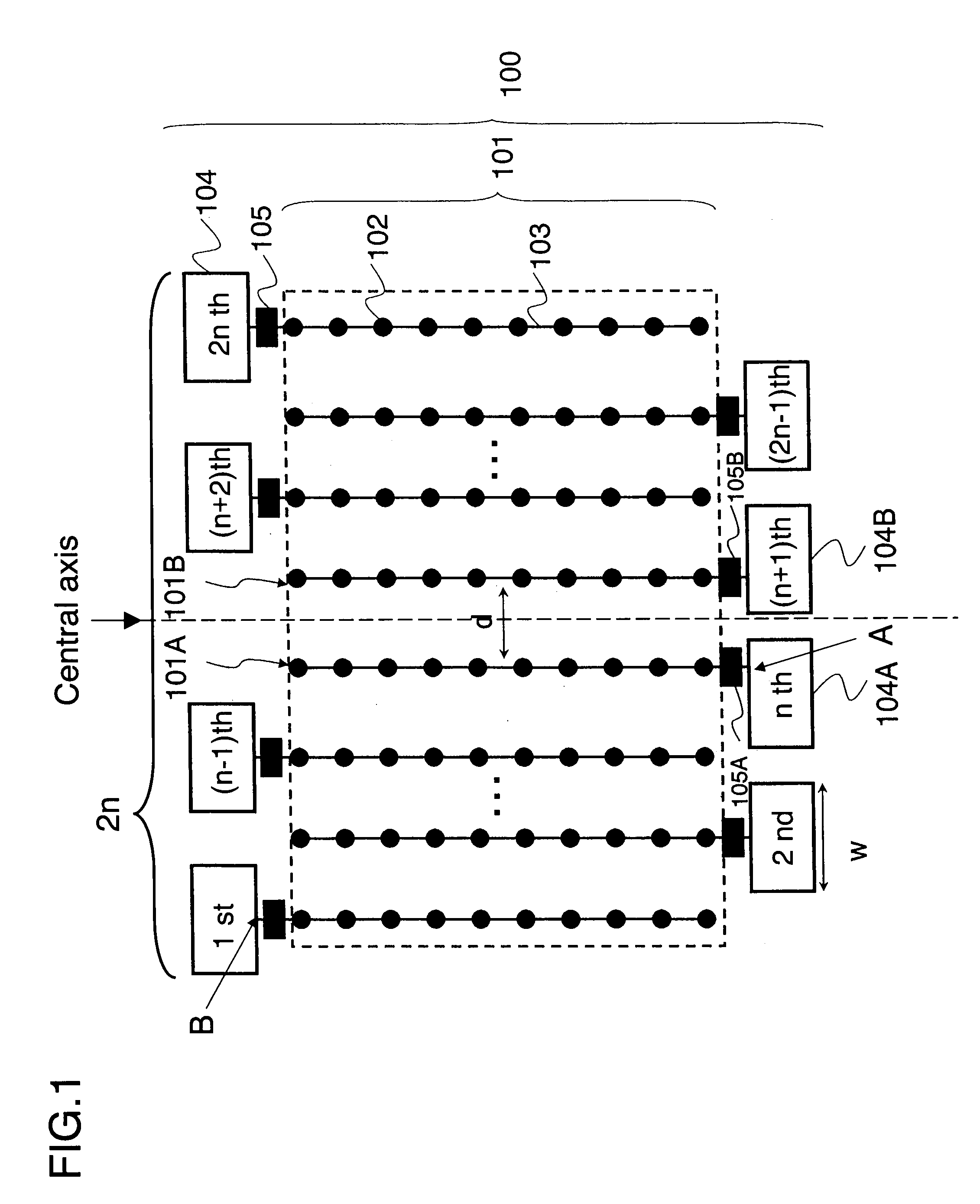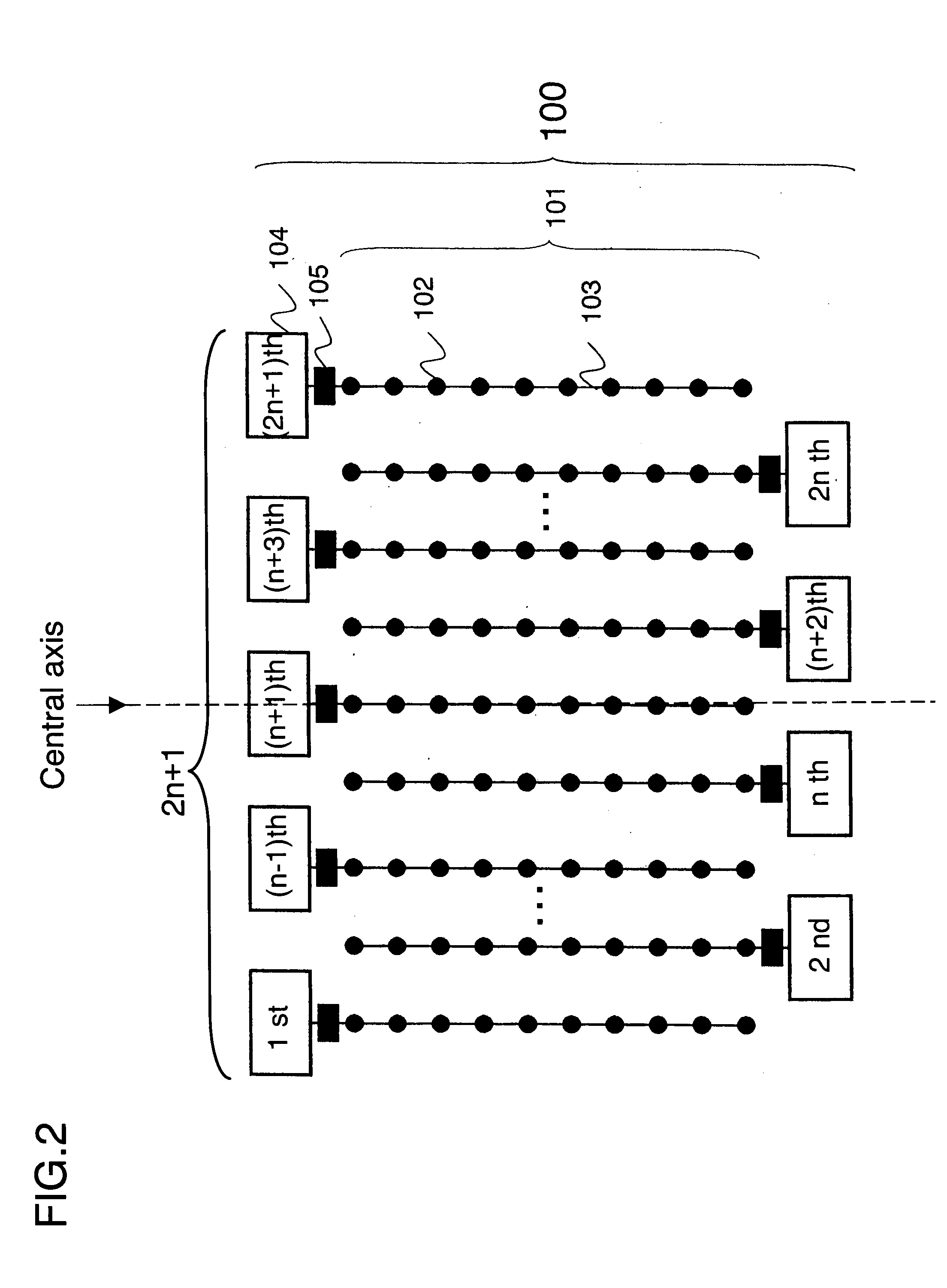Antenna device and radar apparatus
a radar and antenna technology, applied in the direction of antennas, measurement devices, instruments, etc., can solve the problems of asymmetrical phase difference of signal beams, large aperture area of array antennas, and degraded measurement accuracy of target angle in monopulse radar systems
- Summary
- Abstract
- Description
- Claims
- Application Information
AI Technical Summary
Problems solved by technology
Method used
Image
Examples
modified example 1
[0055]Hereinafter, a modified example of an antenna device 100′ will be described. FIG. 5 shows the antenna device 100′ which the number of the subarray antennas is even. The antenna device 100′ includes the subarray antennas 101, the feeding interfaces 104 and phase shifters 105 as same as the antenna device 100. While the n th and (n+1) th feeding interfaces 104, which are the closest to the central axis, are shifted away from each other to avoid giving interference in the antenna device 100 of FIG. 1, they are located at both outside of the 1 st and 2n th subarray antennas in the antenna device 100′ of FIG. 5. The n th and (n+1) th feeding lines 103 are extended longer than other feeding lines 103. In the antenna device 101′, the n th and (n+1) th feeding lines 103 have bend structures to connect to the n th and (n+1) th feeding interfaces 104, respectively.
[0056]The phase shifters 105 varies the widths of the n th and (n+1) th feeding lines 103 in order to shift the phases of th...
modified example 2
[0062]Hereinafter, another modified example will be described. In the modified example 2, the subarray antenna 101 is any one of a waveguide slotted subarray antenna, a conductive waveguide slotted subarray antenna, a patch antenna with the triplate line, a patch antenna with the microstrip line, and a horn array antenna. In the modified example 2, we will describe variation of alignments of the antenna elements 102.
[0063]FIGS. 7-9 show subarray antennas 701-901 which have different alignments of the antenna elements 702-902. As shown in FIG. 7, each antenna element 702 may be located at an end of a sub feeding line 706 which is branched to one side from the feeding line 703. As shown in FIG. 8, each antenna element 802 may be located at the end of a sub feeding line 806 which is branched to both sides from the feeding line 803. Moreover, as shown in FIG. 9, the antenna elements 902 may be located at the end of a sub feeding line 906 branching T-shaped three times from the feeding l...
PUM
 Login to View More
Login to View More Abstract
Description
Claims
Application Information
 Login to View More
Login to View More - R&D
- Intellectual Property
- Life Sciences
- Materials
- Tech Scout
- Unparalleled Data Quality
- Higher Quality Content
- 60% Fewer Hallucinations
Browse by: Latest US Patents, China's latest patents, Technical Efficacy Thesaurus, Application Domain, Technology Topic, Popular Technical Reports.
© 2025 PatSnap. All rights reserved.Legal|Privacy policy|Modern Slavery Act Transparency Statement|Sitemap|About US| Contact US: help@patsnap.com



